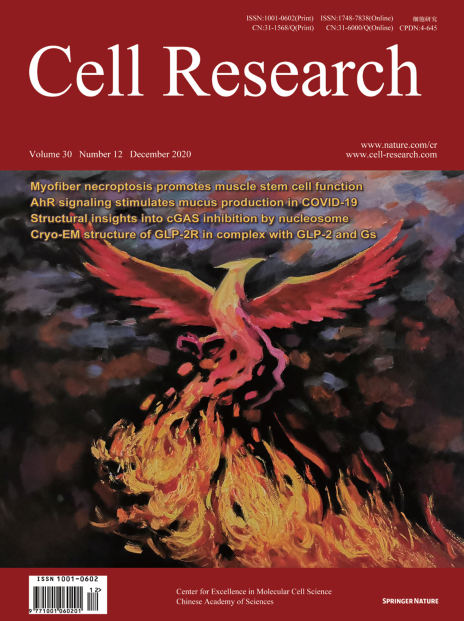
Advanced Search
Submit Manuscript
Advanced Search
Submit Manuscript
Volume 30, No 12, Dec 2020
ISSN: 1001-0602
EISSN: 1748-7838 2018
impact factor 17.848*
(Clarivate Analytics, 2019)
Volume 30 Issue 12, December 2020: 1078-1087 |
Mucus production stimulated by IFN-AhR signaling triggers hypoxia of COVID-19
Yuying Liu1,2 , Jiadi Lv1 , Jiangning Liu3 , Man Li4 , Jing Xie1 , Qi Lv3 , Wei Deng3 , Nannan Zhou1 , Yabo Zhou1 , Jiangping Song5 , Peng Wang4 , Chuan Qin3 , Wei-Min Tong6 , Bo Huang1,2,7,*
1Department of Immunology & National Key Laboratory of Medical Molecular Biology, Institute of Basic Medical Sciences, Chinese Academy of Medical Sciences (CAMS) & Peking Union Medical College, Beijing 100005, ChinaSilent hypoxia has emerged as a unique feature of coronavirus disease 2019 (COVID-19). In this study, we show that mucins are accumulated in the bronchoalveolar lavage fluid (BALF) of COVID-19 patients and are upregulated in the lungs of severe respiratory syndrome coronavirus 2 (SARS-CoV-2)-infected mice and macaques. We find that induction of either interferon (IFN)-β or IFN-γ upon SARS-CoV-2 infection results in activation of aryl hydrocarbon receptor (AhR) signaling through an IDO-Kyn-dependent pathway, leading to transcriptional upregulation of the expression of mucins, both the secreted and membrane-bound, in alveolar epithelial cells. Consequently, accumulated alveolar mucus affects the blood-gas barrier, thus inducing hypoxia and diminishing lung capacity, which can be reversed by blocking AhR activity. These findings potentially explain the silent hypoxia formation in COVID-19 patients, and suggest a possible intervention strategy by targeting the AhR pathway.
https://doi.org/10.1038/s41422-020-00435-z